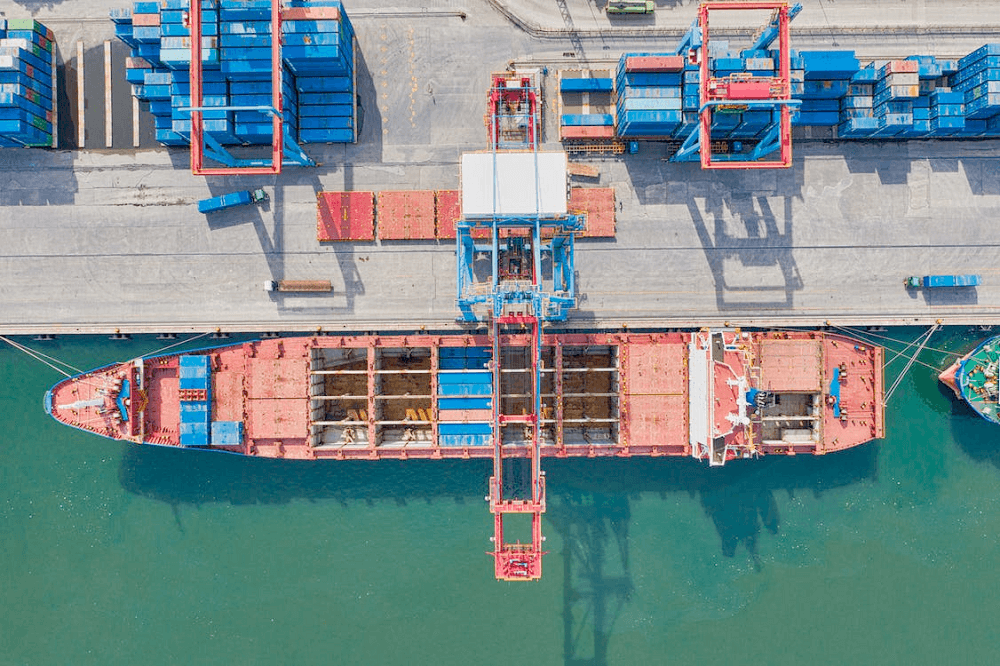
by Sam Franklin | June 14, 2022 | 8 min read
Understanding the Carriage and Insurance Paid To (CIP) Incoterm
Get fundedLast updated: July 08, 2022
Shipping can be one of the biggest hassles in making a sale. Although it is often overlooked until the last minute, the shipping process in international transactions could be the factor that eats into your bottom line if you aren’t too careful about it.
However, the reason that shipping is such a headache is due to the sheer number of different shipping options available to both buyers and sellers. In addition, with multiple carriers handling the goods along the journey, it can be challenging to decide where the responsibilities lie and who bears the risk of loss or damage if something was to go wrong along the voyage.
Luckily, the International Chamber of Commerce (ICC) came together in 1936 to publish the first set of Incoterms to help standardise international trade. These international policies clearly define the responsibilities between buyers and sellers and who holds the risk at different stages in the shipping process.
If you’re looking for information on the other Incoterms, take a look at our Incoterms Overview section.
This article will cover the Incoterm CIP and will tell you everything you might need to know before taking out a CIP shipping policy.
Table of Contents
- What is Carriage and Insurance Paid To (CIP)?
- Understanding Carriage and Insurance Paid To (CIP)
- When to use CIP
- When not to use CIP
- Advantages of CIP
- Disadvantages of CIP
- CIP vs other Incoterms
- Conclusion
What is Carriage and Insurance Paid To (CIP)?

Carriage and Insurance Paid To (CIP) is one of eleven international trade terms created by the International Chamber of Commerce (ICC) in 1936. It dictates that a seller is responsible for delivering the goods to an agreed-upon destination in the buyer’s country.
Under CIP, the seller must pay for the main carriage, which the buyer has the option to contract if they can find a cheaper alternative. In addition, the seller’s obligations also include arranging export clearance and paying for insurance associated with delivering the goods to the named place of destination. The buyer has an option to pay for additional insurance during the carriage of goods if necessary.
Interestingly, the risk transfer occurs at a different place from the cost transfer. The transfer of risk happens when the seller has delivered the goods on the ship at the origin port. As soon as the goods are received by the first carrier, the risk transfers from the seller to the buyer for the main carriage.
Understanding Carriage and Insurance Paid To (CIP)

Carriage and Insurance Paid To (CIP) can be used in any transportation such as ocean freight or air freight. It can also be a train, truck, or barge.
The seller arranges transportation for the main carriage, usually a buyer-contracted carrier. They also have an obligation to obtain any relevant export clearance and documentation.
As soon as the goods have been loaded on the buyer-contracted carrier, the risk transfers from the seller to the buyer. The risk lies with the buyer through the main transport stage as it journeys toward the agreed-upon destination.
After the seller delivers the goods to the named port, the cost transfer occurs. The buyer pays to unload the shipment and then load it onto a truck for onward carriage. They are also responsible for any import charges and duties.
Alongside the carriage paid, the seller is obliged to obtain and pay for the insurance costs for the journey. Typically, the seller will most likely include the price of insuring the goods in the invoice value. The insurance provider selected must be able to settle claims in the destination country. The only other Incoterm that required sellers to pay for insurance is Cost, Insurance, and Freight (CIF).
Changes to Carriage and Insurance Paid To (CIP) in Incoterms 2020
Although CIP has been essentially unchanged since 1936, the International Chamber of Commerce slightly amended it in the Incoterms 2020 update.
The new ICC publication states that the standard insurance under CIP will be Institute Cargo Clauses A, the most extensive coverage. This is higher than the previous requirement, which required Clause C. However, parties can agree to a lower and cheaper level of insurance if both parties agree.
What do CIP terms include?

The shipping terms for CIP include the time and place for the delivery to occur. They also include which vessel will be used for the main carriage and what insurance policy will be obtained.
Following is a list of the standard terms seen in a CIP agreement:
Payment due to seller
Time and place of delivery
Any buyer-contracted vessel for the main carriage
What insurance is obtained
Seller’s responsibility
In CIP, a seller is responsible for:
Delivering the goods safely at the agreed date and point
Creating a sales contract and a commercial invoice
Export packaging and marking
Pre-carriage to terminal
Pre-shipment inspection
Cost of the main carriage
Origin charges
Providing notice to the buyer that goods have been delivered
Minimum insurance coverage
Export formalities such as duty, taxes, and customs clearance
Buyer’s responsibility
In CIP, a buyer is responsible for:
Paying for the goods as dictated in the contract of sale
Providing the seller with relevant information required to fulfil obligations
Onward carriage for the journey’s last leg
Unloading at the final port
Import duty and taxes
Import clearance at the destination terminal
Where are the risk transfers in the CIP Incoterm?
The risk transfer and cost transfer occur at separate locations in the Carriage and Insurance Paid To (CIP) Incoterm.
The risk transfer of the goods takes place when the seller loads the goods on the first carrier at the origin terminal. The cost transfer continues until the buyer has unloaded the goods at the named destination.
When to use CIP

As CIP is not restricted to a particular freight method, it can be used in multi-mode transport.
It particularly works well for shipments supported by a letter of credit as the carrier gives the seller a bill of lading, which serves as evidence that the goods have been taken by the carrier and the freight has been paid by the seller.
CIP is best for manufactured goods with a higher value.
When not to use CIP
CIF might be a better option if the goods are low-value, such as commodity goods.
Advantages of CIP
As the seller delivers the goods and is responsible for obtaining insurance. The buyer only has to handle unloading and obtain any necessary import clearance when the goods arrive.
CIP is advantageous to the seller because the risk transfer occurs when the goods have been loaded onto the first carrier at the origin. After that, the risk is out of the seller’s hands and is transferred to the buyer.
Disadvantages of CIP
Although CIP might seem relatively straightforward for the buyer, there are some potential disadvantages to be aware of.
First, as the risk is transferred to the buyer once the shipment is loaded on the first carrier, the buyer becomes responsible for the loss and damage during the main carriage. In the unlikely scenario that an event occurs on the voyage, the buyer will need to make a claim through the insurance company purchased by the seller.
In addition, because the seller pays for transportation and loading at the port, they may inflate costs to the buyer. Typically, they will include the price for the freight and the insurance price, plus some extra in the invoice price. Therefore, the buyer is likely to be paying higher prices in CIP.
CIP vs other Incoterms

The following is a quick comparison and summary of CIP against other popular Incoterms.
CIP vs CPT
CIP and Carriage Paid To (CPT) are very similar as both Incoterms make the buyer responsible for the goods as soon as they are loaded on the first carrier. In CIP, however, the seller is obligated to purchase insurance cover for the shipment.
CIP vs DAP
In CIP and Delivered at Place (DAP), the seller is responsible for arranging the carriage and delivery of the goods. However, in DAP, the risk doesn’t transfer until the goods are ready for unloading at the destination port.
CIP vs CIF
CIF is Cost, Insurance, and Freight, where the seller covers the goods' costs, insurance, and freight while in transit. CIF is similar to CIP as both Incoterms require the seller to provide the minimum insurance cover for the goods. However, CIP is exclusive to maritime shipping and can only be used in sea and inland waterway modes of transport.
Conclusion
Carriage and Insurance Paid To (CIP) is a great Incoterm for buyers looking for a relatively easy option for international trade. It allows them to be sure that the seller is handling most of the responsibility until the goods arrive at the destination terminal. In addition to this, the seller also covers the insurance, so the buyer only needs to arrange onward carriage, unloading, and any relevant import custom formalities.
Written by

Sam founded his first startup back in 2010 and has since been building startups in the Content Marketing, SEO, eCommerce and SaaS verticals. Sam is a generalist with deep knowledge of lead generation and scaling acquisition and sales.


